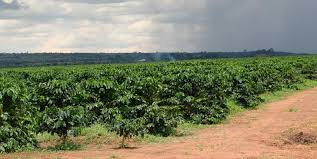Peru
A Blend of Flavor, Tradition, and Sustainability
Peru is renowned for its high-quality coffee, primarily grown in the high-altitude regions of the Andes Mountains. The country produces Arabica beans, which are known for their smoothness and complexity. Peruvian coffee is often characterized by its mild flavor profile and is increasingly gaining recognition in the specialty coffee market.Peru
A Blend of Flavor, Tradition, and Sustainability
Peru is renowned for its high-quality coffee, primarily grown in the high-altitude regions of the Andes Mountains. The country produces Arabica beans, which are known for their smoothness and complexity. Peruvian coffee is often characterized by its mild flavor profile and is increasingly gaining recognition in the specialty coffee market.
Flavor Profile
Peruvian coffee typically exhibits a range of flavors that can vary by region, but common tasting notes include:
• Nutty and Chocolatey: Many Peruvian coffees have a subtle nuttiness with hints of chocolate, making them rich and comforting.
• Fruity Acidity: Bright acidity often showcases citrus or berry notes, adding a refreshing quality to the cup.
• Floral Aromas: Some varieties may have delicate floral hints, enhancing the overall aroma.
• Medium Body: The body of Peruvian coffee is generally medium, providing a balanced mouthfeel that appeals to various palates.
These flavor characteristics make Peruvian coffee versatile and enjoyable for both casual drinkers and connoisseurs.
Eco-Friendly Practices
Peru is recognized for its commitment to sustainable coffee farming practices:
• Shade-Grown Coffee: Many farmers cultivate coffee under a canopy of trees, which helps maintain biodiversity and provides natural habitat for wildlife.
• Organic Farming: A significant portion of Peruvian coffee is grown organically, minimizing the use of synthetic fertilizers and pesticides.
• Fair Trade Certification: Numerous coffee cooperatives are Fair Trade certified, ensuring that farmers receive fair compensation and support for sustainable practices.
These eco-friendly approaches not only enhance the quality of the coffee but also promote environmental conservation and social responsibility.
Coffee Tours and Tastings
Peru offers a variety of coffee tours and tastings that allow visitors to immerse themselves in the local coffee culture:
• Farm Visits: Tourists can visit coffee farms to learn about the cultivation process, from planting to harvesting. Many farms offer hands-on experiences where visitors can participate in coffee picking.
• Cupping Sessions: Engage in cupping sessions to taste different varieties of Peruvian coffee and explore their unique flavor profiles.
• Cultural Experiences: Interact with local farmers and communities to understand the cultural significance of coffee in Peru.
These experiences provide a deeper appreciation for the craftsmanship behind each cup of Peruvian coffee.
Pairing and Sipping
Peruvian coffee pairs well with a variety of foods due to its diverse flavor profile. Here are some pairing suggestions:
• Breakfast Foods: Enjoy it with traditional breakfast items like eggs, bread, or pastries.
• Desserts: The chocolatey notes complement desserts such as brownies or chocolate mousse.
• Savory Dishes: Pair it with grilled meats or hearty stews for a delightful contrast.
The versatility of Peruvian coffee makes it an excellent companion for various culinary experiences.
Growing Regions
Peru's diverse geography contributes to the unique characteristics of its coffee. Key growing regions include:
• Cajamarca: Known for its high-altitude farms that produce bright and fruity coffees with floral notes.
• Junín: This region produces coffees with rich chocolate flavors and a smooth finish.
• Cusco: Famous for its complex flavor profiles, often featuring fruity acidity and nutty undertones.
• San Martín: Known for its sweet and balanced coffees with hints of caramel.
Each region offers distinct flavors influenced by altitude, climate, and soil composition.
Traditional Practices
Many coffee farmers in Peru continue to employ traditional practices that reflect their cultural heritage:
• Hand-Picking: Ripe cherries are selectively hand-picked to ensure only the highest quality fruit is harvested.
• Wet Processing: The traditional wet processing method is commonly used, where cherries are washed and fermented before being dried. This method enhances the clarity and brightness of the coffee.
These traditional methods demonstrate a deep respect for the land and a commitment to producing top-quality coffee.
Global Recognition
Peruvian coffee has gained international recognition for its quality and unique flavor profiles. The country's commitment to sustainability, organic farming, and Fair Trade practices has attracted attention from specialty roasters and coffee enthusiasts worldwide. Peruvian coffees frequently participate in international competitions, showcasing their unique characteristics and earning accolades.
Conclusion
Peru coffee stands out for its rich flavors, commitment to sustainability, and cultural significance. With diverse profiles influenced by unique growing conditions and traditional practices, it offers an inviting experience for coffee lovers. Whether you’re savoring a cup at home or exploring its origins through tours and tastings, Peruvian coffee invites you to appreciate the artistry behind each brew

